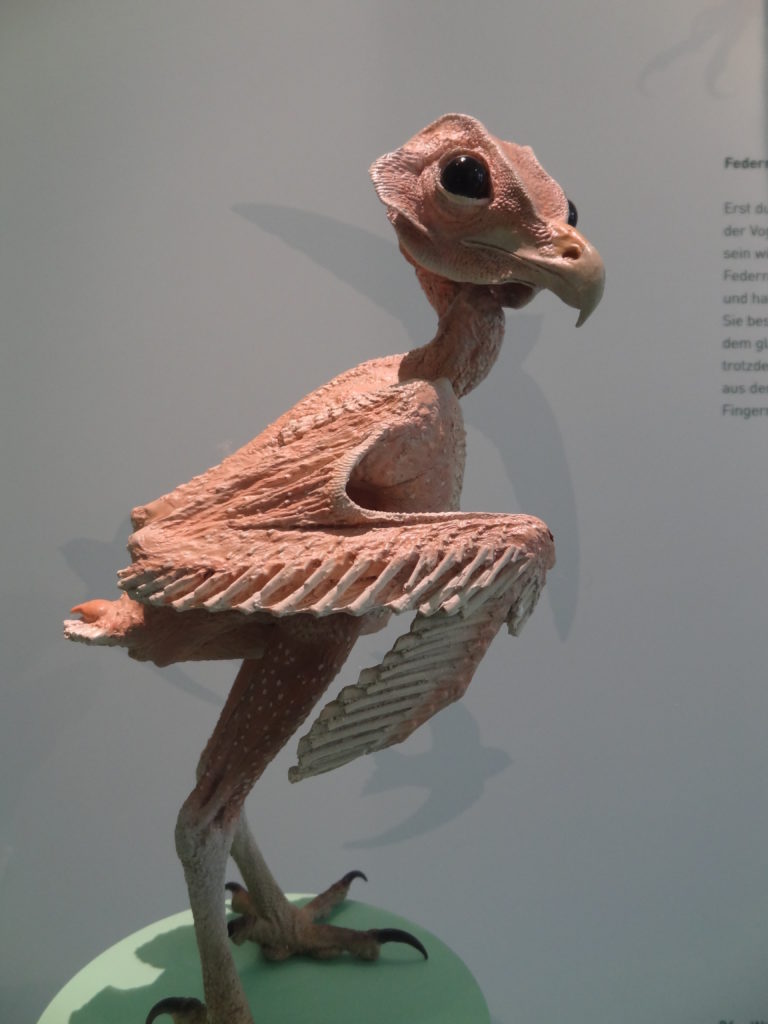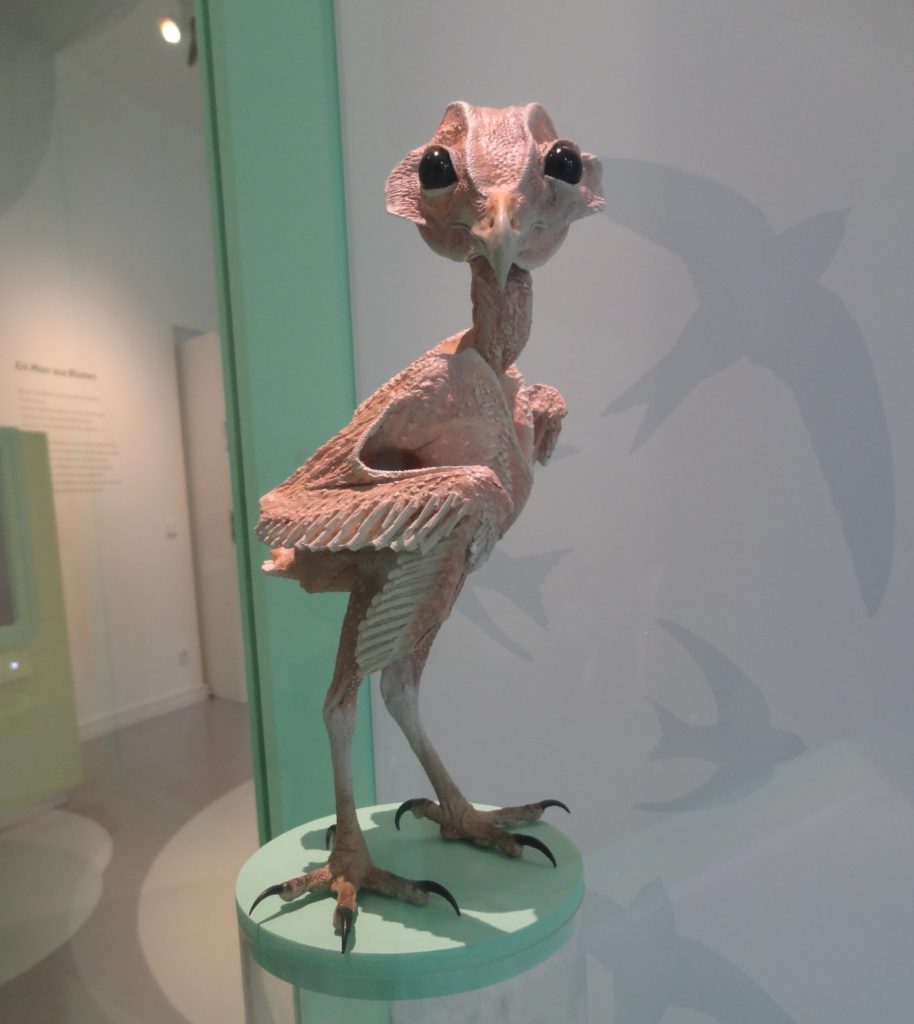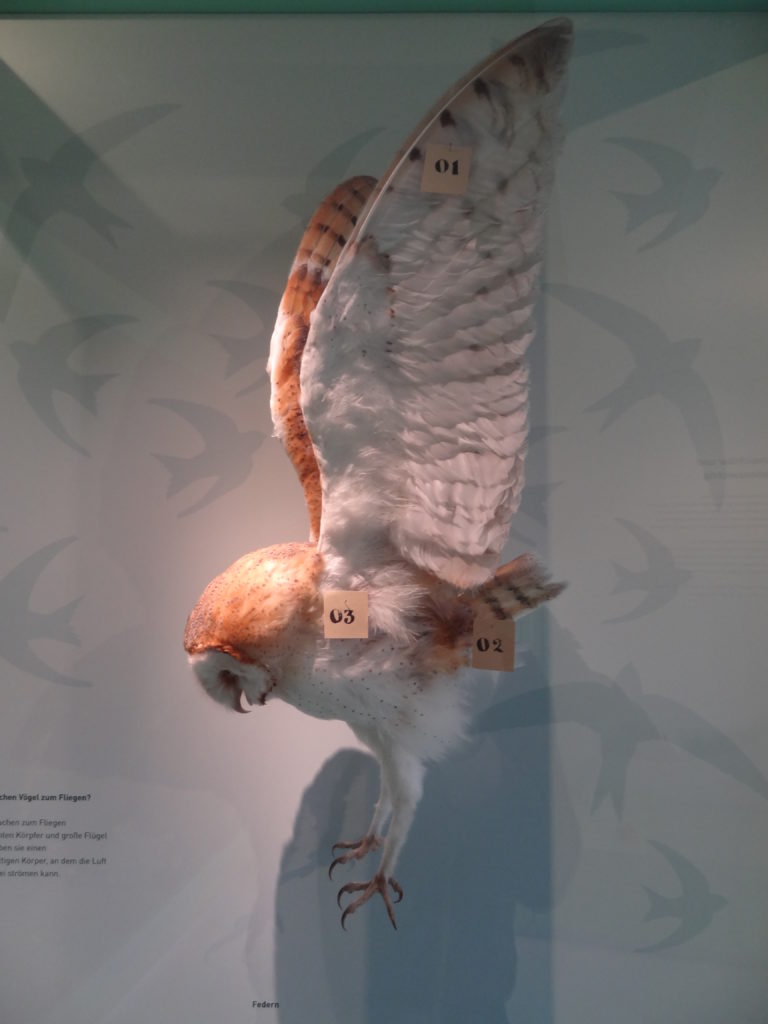Today I want to show you one of the coolest bird specimens I have ever seen in a museum, a bodycast of a barn owl (Tyto alba) with removed feathers. This gives us a great opportunity to see the enormous amount of volume which is made up by the feathers of a bird. It shows also very well how much the external appearance of an owl differs from the actual body below.

This is of course a particularly extreme example as owls have especially voluminous feathers on their heads and necks, what makes the difference even more remarkable.We are often used to think that feathers and fur are only thin coats that closely follow the underlying body shapes.

But in many cases we see a massive difference between the apparent body proportions with feathers or fur and the real body proportions below.The barn owl here is an excellent example for this.

It was on exhibit in a special exhibition of the Museum Mensch und Natur (museum of man and nature) in Freiburg which I visited a few years ago. I don’t think the featherless body was a real plastinated owl but quite likely a cast. We can see here all the features which are usually hidden below the thick plumage, including the weird skin folds around the ears of the owl.

Besides the featherless body was also a full taxidermy specimen for a better visualization of the differences.

A particularly good idea was also the jar filled with the removed feathers to show just how much volume they have.

Of course it’s somewhat more than the volume of the feathers as long as they are still attached to the skin. Something we also often tend to forget is the weight of feathers. They are symbols of weightlessness, and singular feathers have very little weight indeed. But altogether they summarize to a considerable weight which can make up a lot of a bird’s total weight. Reconstructions of extinct birds and of course certain lineages of feathered theropods as well (and yes, of course I am are aware that birds are technically theropod dinosaurs, yet I find it still useful to discriminate between anatomically modern birds and feathered mesozoic theropods for several reasons). We have to keep the volume in mind when we reconstruct the outlines of such animals from their bare bones, especially on body areas like the necks. The differences in the appearances can be really dramatic as even a moderate amount of feather volume can change the body shape a lot. The weight of plumage is also a considerable factor when it comes to weight estimates for extinct birds and feathered theropods as well, especially for those capable of flight which had well developed wing feathers. In the Haast´s eagle (Hiraaetus moorei) for example, the feathers of a specimen of 12,33 kg weighed around 0,85 kg alone.
